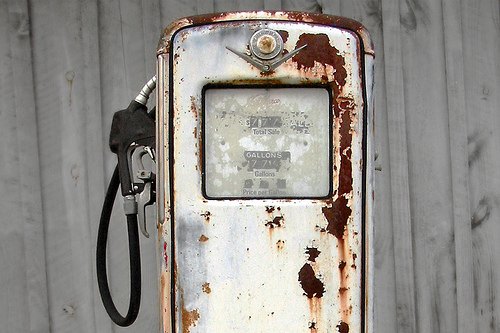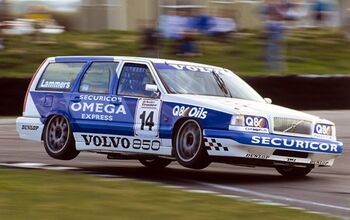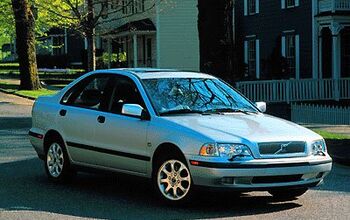Piston Slap: Gassing up a Swedish Meatball

CAHIBOstep, TTAC’s biggest fan on our Facebook page, writes:
My owner’s manual recommends 91 octane gasoline for my turbocharged five-pot (Volvo T5). There’s no 91 octane gas in Illinois, only 87, 89 and 93. When I was at the gas station the other day, I decided that instead of buying 93, I would mix equal parts 89 and 93 to get 91 (89 + 93 = 182/2 = 91).
Does this actually work? Does this make me the cheapest person in the world?
Sajeev’s answer:
You can make 91 octane with high and low octane gas, since mid-grade gasoline is mixed inside the pump like that. The quality/calibration of the pump is always a concern. Since Chi-town has 93 octane, the Pistonhead answer is to get your ECU re-flashed to take advantage of the extra two octane points. Which is a nice upgrade for many cars, but huge step up for a turbocharged Swedish meatball that’ll crank up the boost accordingly.
I’m sure a Volvo tuner like “IPD” can hook you up, and I wouldn’t be surprised if there’s a more generic Euro tuner worthy of your hard earned cash too. Automakers dumb down their spark timing to compensate for regions that use 91 octane. The number of regional blends and octane ratings in this country are staggering.
Bonus! A Piston Slap nugget of wisdom from TTAC’s resident Volvo-guru, Alex Dykes:
All of Volvo’s turbo engines require a minimum of 87 octane gasoline but recommend 91 octane to achieve rated power figures. As a rule of thumb, the more modern the engine, the better the systems are able to adjust to varying fuel grades. The thing to remember when feeding your turbo engine a lower octane fuel is that because of the turbo the effective compression is fairly high and pre-ignition is a concern, the engines will retard timing to reduce this which in turn reduces power and fuel economy slightly. If you feel really cheap, the difference in fuel economy may not make up for the cheaper cost per gallon.
On octane, its important to remember that each state sets the definition of regular/midgrade/premium in their market. Some states follow the SAE guidelines of 87/89/91 and some do not. States like California have very strict standards on the actual vs advertised octane numbers and other states do not, so a 91 octane in CA is going to be very close to 91 but 93 in some other state could easily test at a lower octane number. Also, for our friends in the EU, the USA uses Pump Octane Number PON aka Anti-Knock Index or AKI while other countries use RON or MON, these numbers cannot be directly compared.
[Send your technical queries to sajeev.mehta@thetruthaboutcars.com]

More by Sajeev Mehta
Latest Car Reviews
Read moreLatest Product Reviews
Read moreRecent Comments
- Lou_BC Hard pass
- TheEndlessEnigma These cars were bought and hooned. This is a bomb waiting to go off in an owner's driveway.
- Kwik_Shift_Pro4X Thankfully I don't have to deal with GDI issues in my Frontier. These cleaners should do well for me if I win.
- Theflyersfan Serious answer time...Honda used to stand for excellence in auto engineering. Their first main claim to fame was the CVCC (we don't need a catalytic converter!) engine and it sent from there. Their suspensions, their VTEC engines, slick manual transmissions, even a stowing minivan seat, all theirs. But I think they've been coasting a bit lately. Yes, the Civic Type-R has a powerful small engine, but the Honda of old would have found a way to get more revs out of it and make it feel like an i-VTEC engine of old instead of any old turbo engine that can be found in a multitude of performance small cars. Their 1.5L turbo-4...well...have they ever figured out the oil dilution problems? Very un-Honda-like. Paint issues that still linger. Cheaper feeling interior trim. All things that fly in the face of what Honda once was. The only thing that they seem to have kept have been the sales staff that treat you with utter contempt for daring to walk into their inner sanctum and wanting a deal on something that isn't a bare-bones CR-V. So Honda, beat the rest of your Japanese and Korean rivals, and plug-in hybridize everything. If you want a relatively (in an engineering way) easy way to get ahead of the curve, raise the CAFE score, and have a major point to advertise, and be able to sell to those who can't plug in easily, sell them on something that will get, for example, 35% better mileage, plug in when you get a chance, and drives like a Honda. Bring back some of the engineering skills that Honda once stood for. And then start introducing a portfolio of EVs once people are more comfortable with the idea of plugging in. People seeing that they can easily use an EV for their daily errands with the gas engine never starting will eventually sell them on a future EV because that range anxiety will be lessened. The all EV leap is still a bridge too far, especially as recent sales numbers have shown. Baby steps. That's how you win people over.
- Theflyersfan If this saves (or delays) an expensive carbon brushing off of the valves down the road, I'll take a case. I understand that can be a very expensive bit of scheduled maintenance.


































Comments
Join the conversation
@Pch101 "I tend to have more faith in the guys at the factory" I agree 100%. My V50 is turbocharged but considering I started with an '86 240DL in college, I am already living high on the hog, as it were. I do think it would be fun to have another 30 HP on tap, but I probably should just save the $1,500 to buy a faster car.